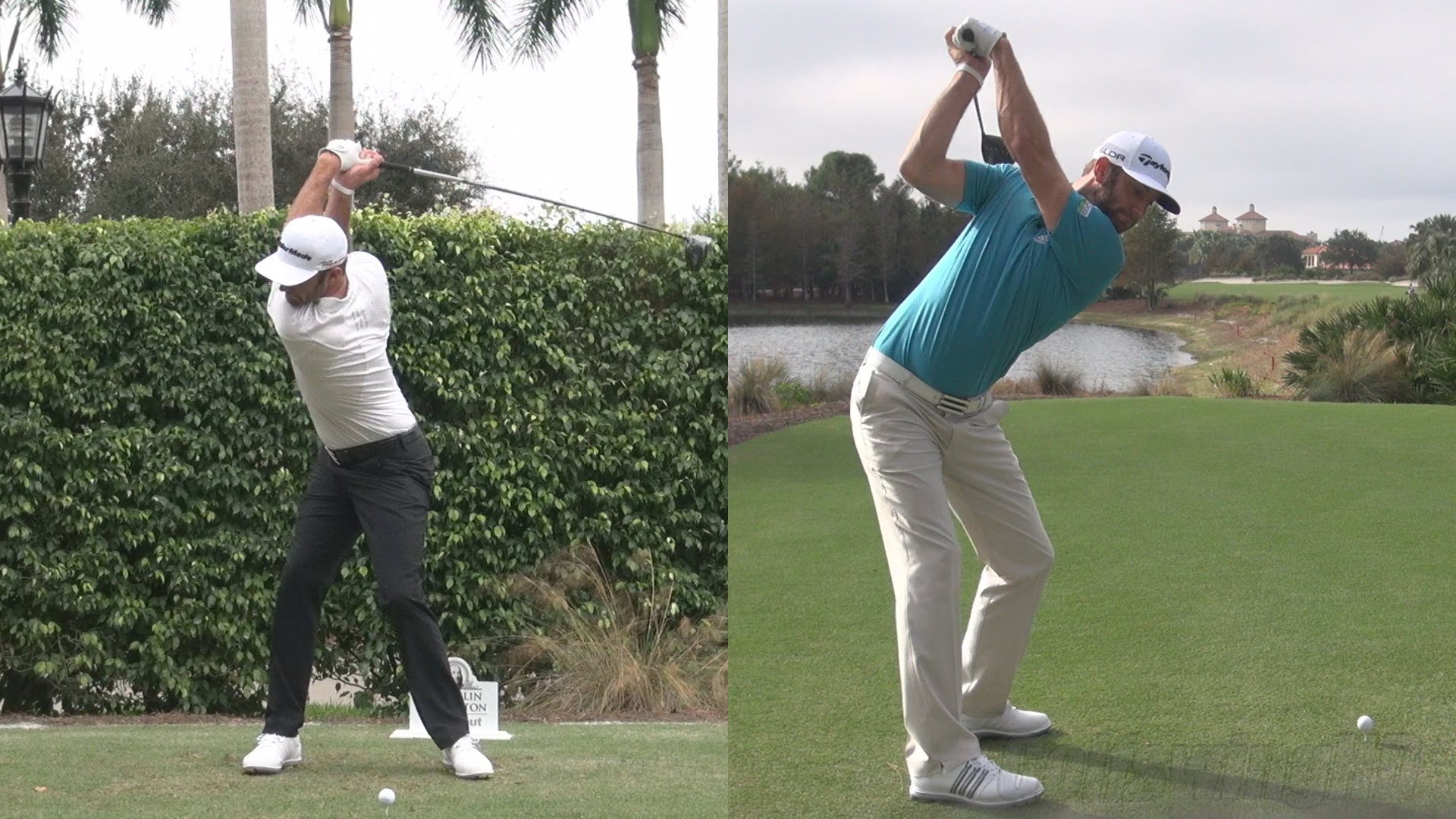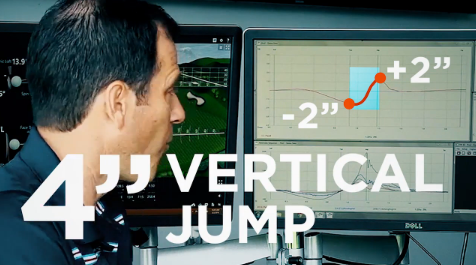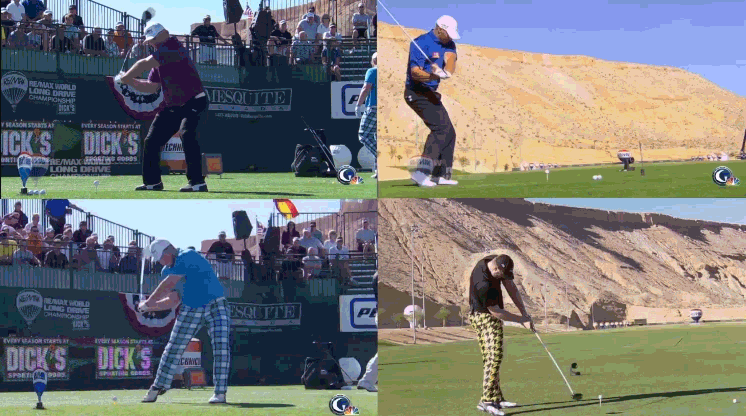IMPROVE MY GAME
Articles
What We Can Learn About Distance From Long Drive Competitors
Some of the most explosive athletes in golf have descended on Thackerville, OK for the World Long Drive Championships. In addition to being great theater, Long Drive competitions can be quite educational. There's a lot that we can learn from a long drive competitor about how to generate power in the golf swing.
In the video above, Dr. Rose discussed some of the unique attributes that allow a long driver to launch the ball at 200+ mph. While the nature of these swings don't lend themselves to consistency, there are a few things you might be able to learn to cheat a few extra yards out of your swing.
1) Lift Your Lead Heel
Lifting the lead heel in the backswing has become less common with the introduction of the modern swing which favors a more stable lower body. Many of the game's biggest hitters such as Jason Day, Dustin Johnson and Rory McIlroy employ modern swing techniques. While these swings are pleasing to look at, they are difficult for most amateurs to emulate. Achieving a full turn without lifting your lead heel requires tremendous mobility in the hip and ankle. This is why it is so important to be screened before you try to adopt a particular style of swing. For example, if you score poorly on the Lower Quarter Rotation Test, you don't have the hip mobility to swing like Jason, Rory or Dustin. Watch how stable Jason Day keep his lower body in his swing. The average mid-handicapper won't have the physical tools to do this.
That doesn't mean you can't play great golf. Lifting the lead heel has been a technique employed by many of the game's greatest players. The most important thing you can do is to match your swing to your physical capabilities (or to start working with a professional who will help you improve your physical capabilities). Many amatuers will probably find that lifting their heel will help them make a bigger turn and maybe gain a few more yards.
2) Hands High
There are four major power sources in the golf swing: 1) Rotational Power; 2) Chop Power; 3) Wrist Power; and 4) Vertical Thrust. Not only does keeping your hands high at the top of the backswing create tremendous width, it also engages the core which is key for chop power.
Liam Mucklow, former long drive competitor and instructor in our advanced Power courses, says:
"Another benefit of having the hands is a raised position is that it can reduce the MOI (Moment of Inertia) of the trunk allowing it to increase its rotational velocity. All things being equal when we increase the rotational velocity of a proximal segment it can result in a multiplying effect on the speed gain as we move distally towards the club handle. The biggest difference in the speed gains created by a long driver compared to a PGA Tour player is at the shoulder link. There is minimal difference in torso speed, but a massive difference between the speed of the lead arm. For years now the longest drivers on the PGA have also exhibited this swing characteristic."
.jpg)

In the video below, Liam demonstrates how he was able to help a golfer increase their lead-arm speed by improving the chop motion and reducing the MOI of the trunk.
3) Vertical Thrust
If you've followed us for long, you're likely familiar with the relationship between vertical thrust and clubhead speed. It's not something we think about often, but the ability to create vertical thrust is a massively important strategy for power in the golf swing. Consequently, if you see a player near the top of the rankings in driving distance, there's a good chance they've got some bounce.
Some of the biggest hitters in golf are also the biggest jumpers. Here's why vertical jump matters & how to improve https://t.co/eh39iIhWbN pic.twitter.com/grkYNmissH
— TPI (@MyTPI) October 10, 2016

While some TOUR pros like Bubba Watson and JB Holmes will actually leave the ground near impact, there is nowhere that the importance of vertical thrust as a power source is more evident than the World Long Drive Championships.

Here's data from BodiTrak on how long drive competitors use the ground. These concepts are consistent with how some of the TOUR's biggest hitters interact with the ground, as well.
As Dr. Rose mentions in the video above, the average long drive competitor rotates their arms at 1350°/second which is 50% greater than the average TOUR player. To accomplish this, they are maxing out the strategies listed above (not to mention absolutely swinging out of their shoes). Again, it would be impractical to adopt these attributes to the degree with which they are used in long drive competitions, but by understanding what the world's longest are doing well you might be able to identify areas for improvement in your own game.